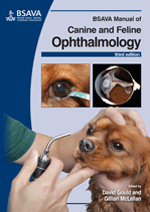
Full text loading...

A thorough understanding of ocular anatomy and physiology and attention to detail regarding positioning of both patient and surgeon, correct use of magnification, and careful instrument selection are all of vital importance if the best surgical outcome is to be achieved. General principles of ophthalmic surgery are considered in detail in this chapter, such as patient and surgeon positioning, sterile preparation of the eye and adnexa; use of magnification; ophthalmic instrumentation; postoperative care.
Principles of ophthalmic surgery, Page 1 of 1
< Previous page | Next page > /docserver/preview/fulltext/10.22233/9781910443170/9781910443170.6-1.gif

Full text loading...





























